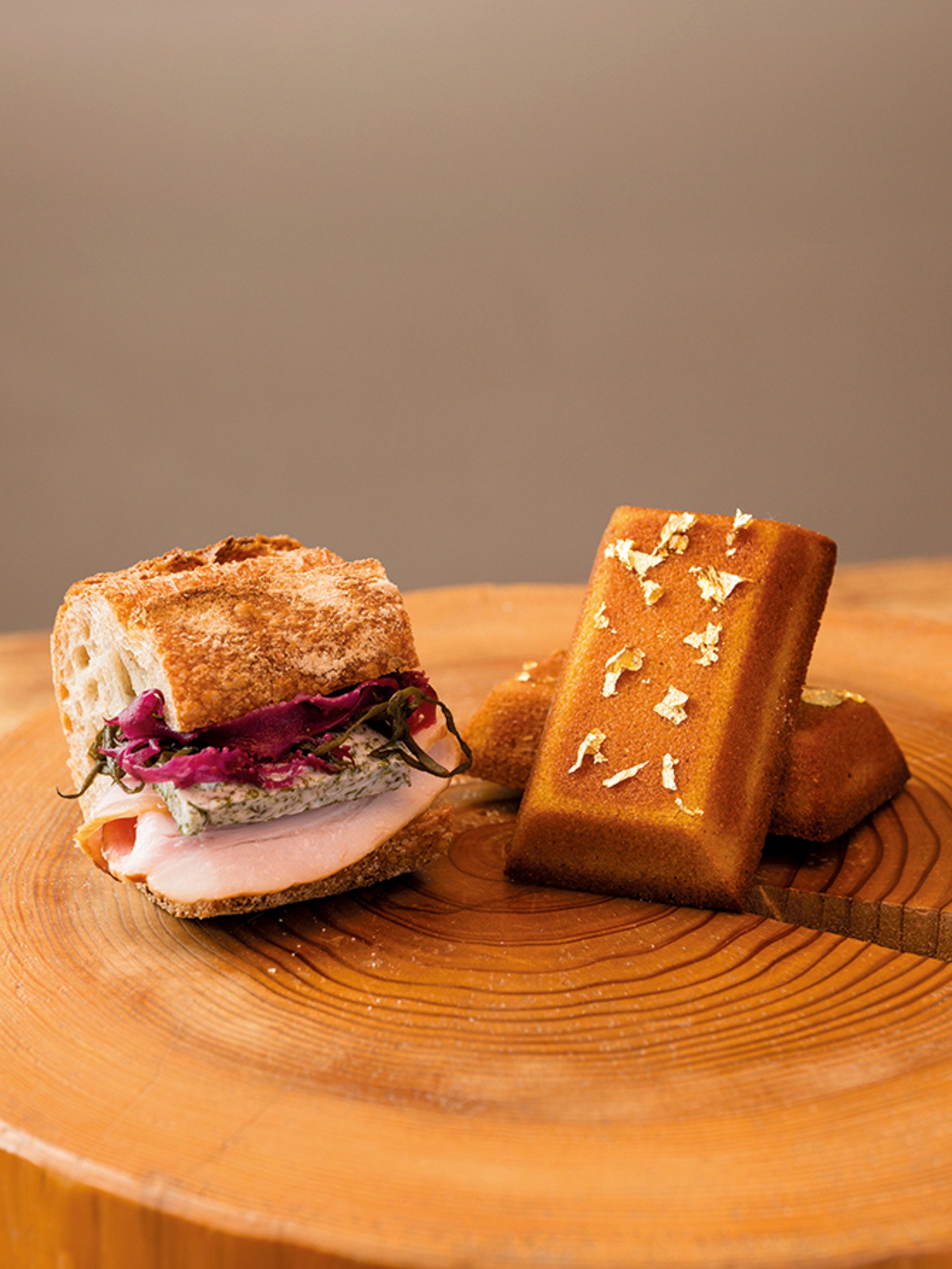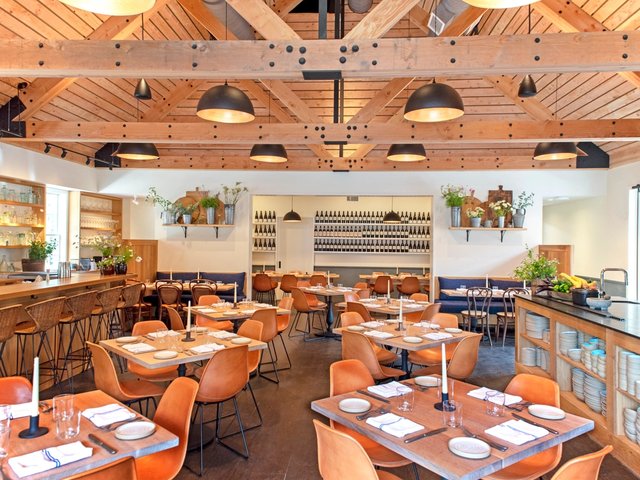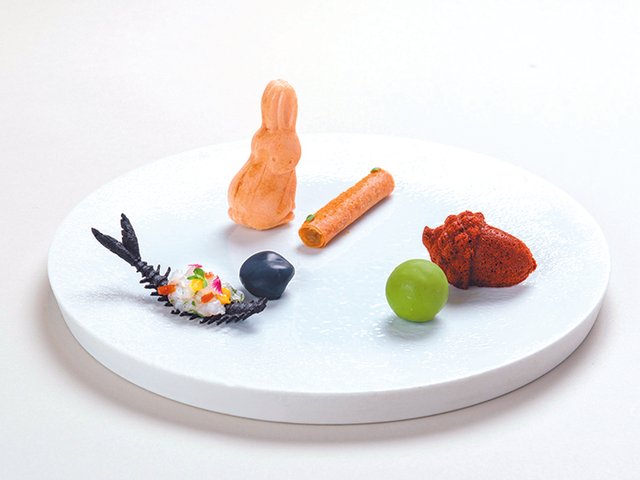The AWT Bar’s edible art this year was created by Shinobu Namae, cofounder of the bakery Bricolage Bread & Co. in Roppongi and executive chef of the three-Michelin-starred French restaurant L’Effervescence in Nishi-Azabu, both outlets known for pushing the boundaries of their categories.
Over 15 years working in Tokyo, Namae has become a vocal proponent of sustainability and local sourcing, moving the city’s food scene in that direction through his restaurants and a broad range of advocacy work. From speaking at the United Nations on marine revitalisation to volunteering meals for first responders and evacuees, he works toward the creation of a holistic culinary ecosystem that sustains people in both concrete and intangible ways.
We aren’t just observers
This sociological focus is perhaps unsurprising given Namae studied political science before entering the culinary world. “I’ve always been interested in how society evolves, how people change. We aren’t just observers. As individuals living in society, we are capable of exerting influence and perhaps being influenced in return,” he says. “That’s what it means to be human.”
From this macro perspective of interconnectedness, Namae’s approach as a chef is to make food that pleases his producers as much as his customers. Those twin imperatives provide the guiding star for the culinary exploration and innovation favoured at Bricolage and L’Effervesence.

Namae’s unique takes on French flavours at the AWT Bar include a jambon-beurre (left) with Okinawan ham and aromatic seaweed, while his financier cake (right) is sprinkled with gold leaf
Photo by Art Week Tokyo/Katsuhiro Saiki
Take the AWT Bar’s jambon-beurre, for example. Namae creates a local riff on this crowd-pleasing French classic by using Okinawan ham and blending the butter with a type of aromatic seaweed called suji aonori. The seaweed is sourced from a company called Sea Vegetable that cultivates edible seaweeds, particularly those under threat from global warming.
Wild suji aonori used to be harvested from the Shimanto River in Kōchi Prefecture, but rising water temperatures have driven yields down. Sea Vegetable is using aquaculture techniques to grow the species elsewhere with the eventual goal of returning it to its natural habitat. So, in enjoying this tasty marriage of French and Japanese tradition, diners are supporting the preservation of a unique biome and learning about a threatened aspect of local food culture. Sea Vegetable, meanwhile, receives financial support for its preservation efforts.
Appreciation for this kind of thoughtful, boundary-blurring fare speaks to a growing food literacy Namae has seen emerging in the Tokyo culinary scene in recent years. “Back when I was learning to cook, the ideal for a Tokyo restaurant was to take, for example, highly orthodox French cuisine or a particular regional cuisine from Italy and replicate it here,” says Namae. “These days, the restaurants that build on that base, where the chef can freely express their own personality, are extremely popular.”
Unique vision
This is the case at Kiyosumi-Shirakawa’s O2, one of Art Week Tokyo’s recommended restaurants. Chef Kotaro Otsu’s cuisine is ostensibly Chinese but draws heavily on both Western and Japanese ingredients, not to mention a very Eurocentric wine list. The final result defies easy categorisation, achieving an idiosyncratic flavour that is the chef’s unique vision.
At the same time, there is still an intense love of traditional, conservative expressions, particularly in Japanese cuisine, says Namae. Diners still want to go for classic kaiseki at places like Seo in Gyoemmae and know the dishes share an unbroken lineage with those served in Kyoto’s imperial court centuries ago.
In Tokyo, there is room for both approaches, of course. “The richest societies are those that have lots of diverse elements,” Namae says. For him, the role of restaurants is to participate in the exchange and to provide a “third place”, referring to sociologist Ray Oldenburg’s term for places outside of work and home where people can converse with others and connect with community. “When you go to school or work, you have a role that you have to play. Same when you go home. Everyone is bound by rules and obligations,” Namae explains. “But I hope that when people come to my restaurants, they feel free from those boundaries. Time at a restaurant allows people to reconnect with their own emotions.”
The impact of a flavour jarring loose some forgotten memory. The provenance of an ingredient forging a connection to an unfamiliar way of life. The wine prompting a discussion of issues from a new angle. These are among the ways a fine meal nourishes the people of Tokyo.







